Northeastern University looks back at the moon landing 50 years later: The space age takes flight

- intro video trigger
The space age
takes flight
Saturday, July 20, marks the 50th anniversary of the first landing on the moon. Every day this week, News@Northeastern will look at the technological breakthroughs, the political decisions, and the feats of daring that made the landing possible; the lunar landing itself; and what the future might hold for space exploration. Northeastern’s Archives and Special Collections is the exclusive home of The Boston Globe’s Library Collection, and we’ll use those images to highlight the space program and the university’s role in space exploration.
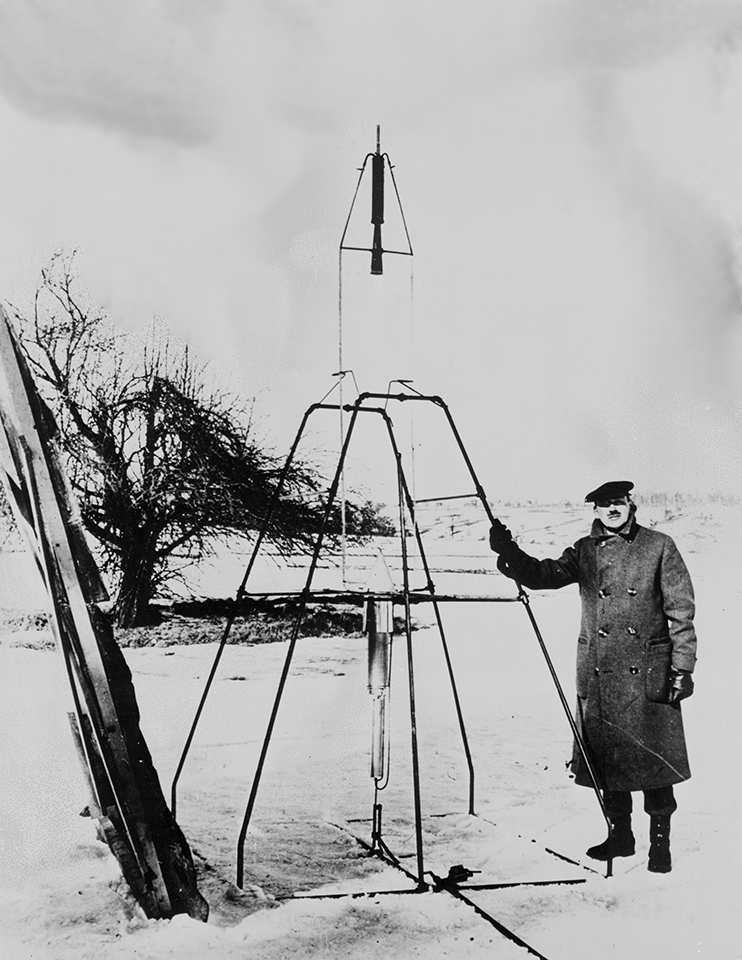
Dr. Robert H. Goddard and one of his early rockets in March, 1926, Auburn, Massachusetts. Many of Goddard’s inventions, such as liquid fuel and multi-stage rockets, are still in use today. Image courtesy of NASA.
Among those inspired was Robert Goddard, an American engineer and physicist who dedicated his life to designing rockets. He launched the first liquid-fueled rocket in 1926. It went about 40 feet in the air, before curving sideways and crashing through the snow.
Goddard continued to improve the steering systems and fuel systems for his rockets, eventually accumulating over 200 patents, many of which were given posthumously. His work laid the foundation for space flight.
In 1865, Jules Verne published From the Earth to the Moon, a novel in which characters attempt to build a cannon large enough to lob three people up to our nearest celestial neighbor.
While a space cannon falls strictly in the realm of science fiction (the acceleration alone would have killed the would-be astronauts), Verne’s novel was one of several that sparked humanity’s interest in reaching beyond our earthly boundaries.
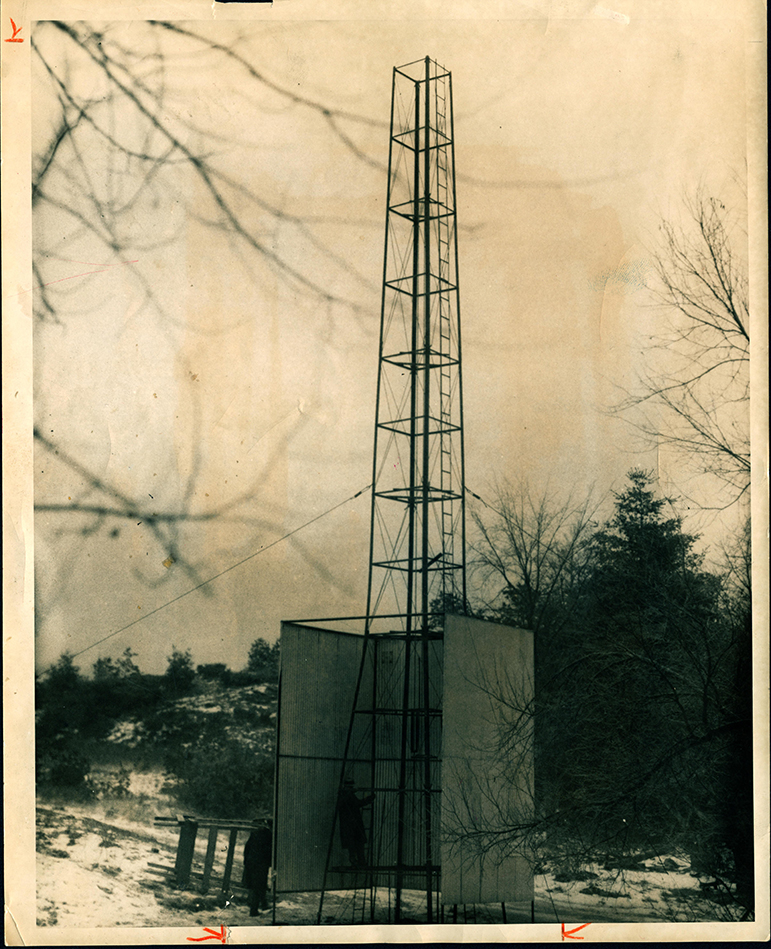
Goddard’s steel frame tower for a large rocket experiment at Fort Devens, Massachusetts in December 1929. Courtesy of the Boston Globe Library Collection at the Northeastern University Archives and Special Collections.
Yesterday’s Tomorrows
Long before humans walked on the moon, we dreamed of reaching the stars. And while our predictions of life in space weren’t exactly accurate, they certainly were entertaining.
By World War II, rockets were viewed more as potential weapons than instruments of scientific exploration. This culminated in Nazi Germany’s V-2 rocket, which was built with slave labor drawn from concentration camps. More than 10,000 people died in the construction of the V-2, which became the first object to reach the edge of space, before crashing down on its target with a payload of explosives.
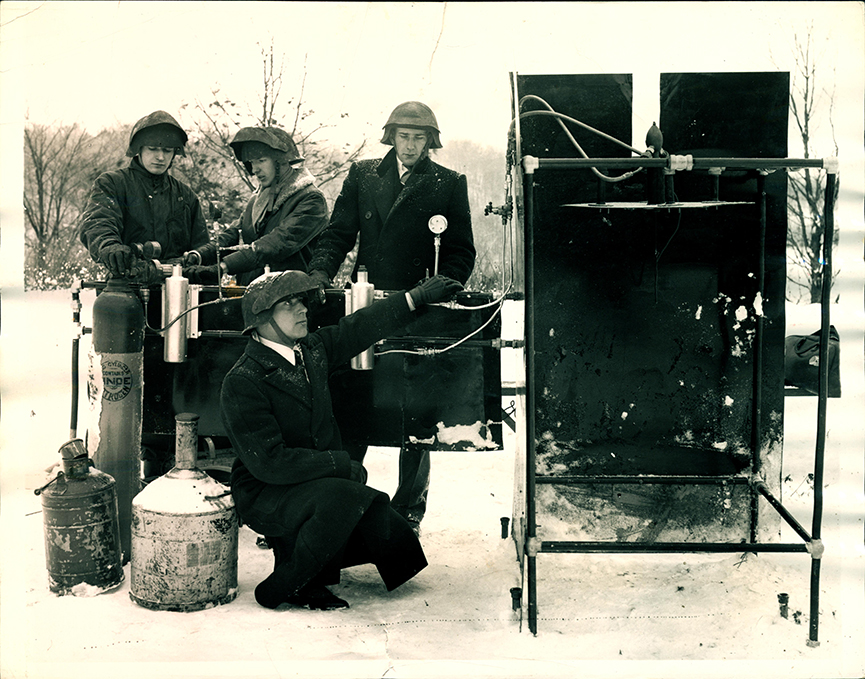
The Cleveland Rocket Society tests an experimental liquid-fueled stratospheric rocket in December 1933. AP/Courtesy of the Boston Globe Library Collection at the Northeastern University Archives and Special Collections.
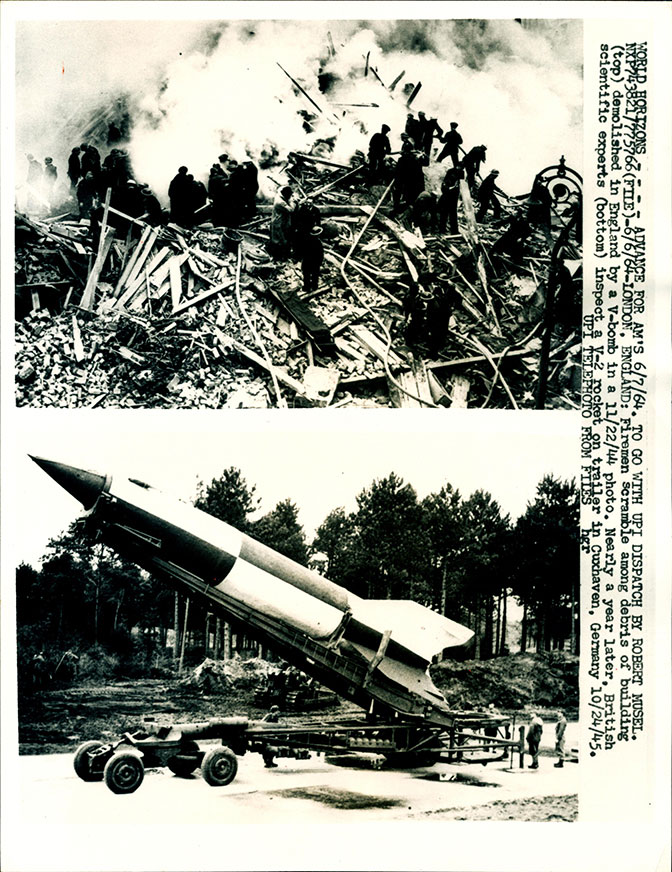
Top: London building demolished by V-bomb in 1944. Bottom: British scientific experts inspect a captured V-2 rocket in Cuxhaven in Germany in October 1945. Both the United States and the Soviet Union would benefit from rocket technology and personnel captured from Nazi Germany. UPI/Courtesy of the Boston Globe Library Collection at the Northeastern University Archives and Special Collections.
After the war ended, the architect of the V-2, Wernher von Braun, was smuggled to the United States, along with hundreds of other German rocket scientists. Their pasts were whitewashed, and they set to work designing ballistic missiles for the U.S. Army. Von Braun would eventually become the director of NASA’s Marshall Space Flight Center and a key player in the project that launched American astronauts to the moon.
Bringing Nazi scientists to the United States served the dual purpose of using their knowledge to advance U.S. technology and keeping it out of the hands of the Soviet Union. But the Soviets had recruited their own German scientists. Cold War fears of nuclear warheads strapped to long-range missiles rapidly fueled rocket programs in both countries.
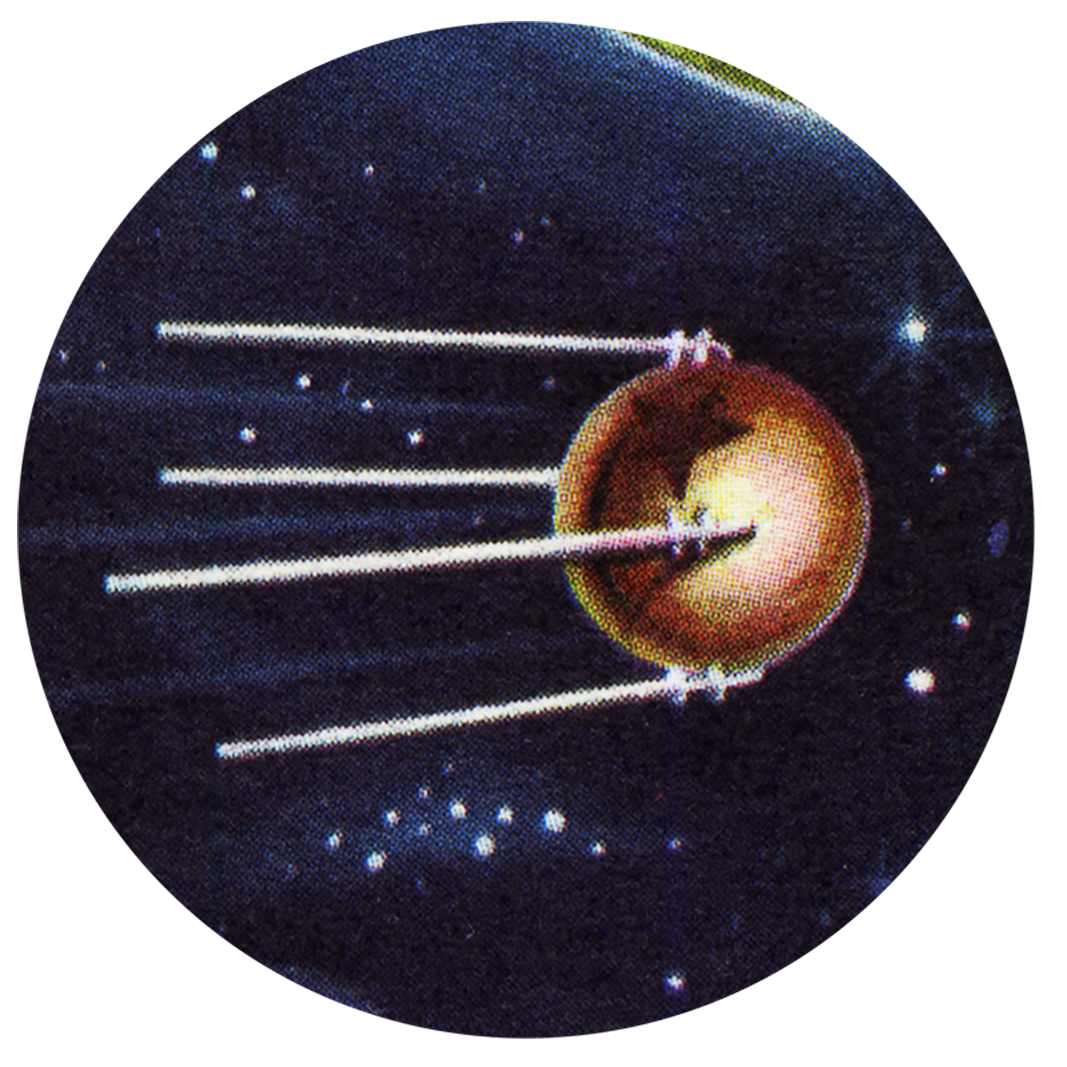
In 1955, the U.S. announced plans to put a satellite into orbit between 1957 and 1958. The U.S.S.R. announced similar plans that same year, and the Space Race was on.
On October 4, 1957, the Soviet Union succeeded in launching the first earth-orbiting satellite into space. Sputnik I was a 184-pound metal beach ball broadcasting simple beeps from four antennas. It shocked, and awed, the Americans.
Animals in space
The first creatures sent into space were fruit flies, which U.S. researchers attached to a V-2 rocket in 1947. The craft carrying the insects flew up 68 miles, and then parachuted back down.
The fruit flies survived, unlike a series of monkeys named Albert that were launched into the heavens by the U.S. between 1948 and 1951. After the death of Albert VI, the researchers started using other names for their primates, and met with more success.
The Soviet Union preferred space dogs as their test subjects, claiming that canines would be more comfortable remaining still for long periods of time. The French space program trained 14 female cats for space flight, but only one of them, Félicette, made it to space.

Sputnik II captured over Arlington, Massachusetts, on Nov. 7, 1957. Paul Donaldson/Courtesy of the Boston Globe Library Collection at the Northeastern University Archives and Special Collections.
Only a month later, Soviet scientists successfully sent the first animal into orbit, a stray dog named Laika, on board Sputnik II. Although Laika died on board (the capsule was never intended to be retrieved), the flight was a step towards putting humans into space.
When the U.S. tried to respond by launching its own satellite in December, the rocket exploded on the launchpad.
At the end of January, 1958, the Americans finally had a successful launch, sending up a satellite, dubbed Explorer I, that was carrying instruments to measure radiation levels in Earth’s orbit. But U.S. fears about the “space gap” continued. Congress passed legislation to form the National Aeronautics and Space Administration, and more satellites followed.
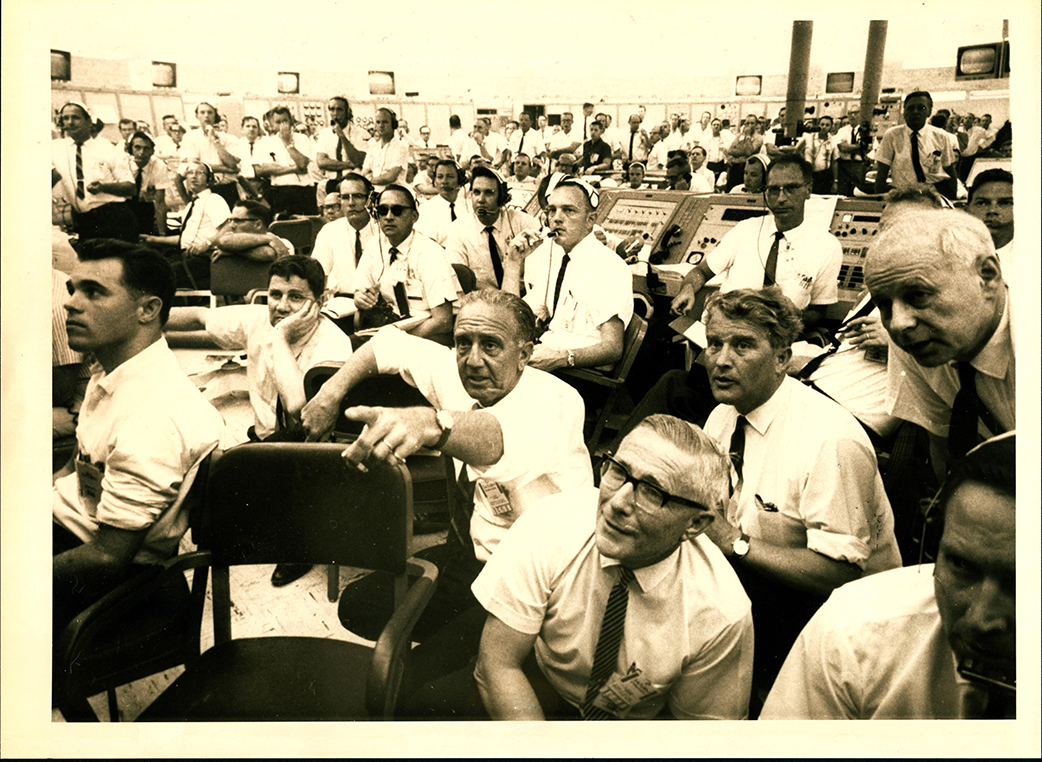
Members of the original German rocket team gather at Kennedy Space Center to observe a launch in May, 1965. Pointing (center) is Kurt H. Debus; to the right (foreground) is Hans Gruene; to his right is Wernher von Braun. AP/Courtesy of the Boston Globe Library Collection at the Northeastern University Archives and Special Collections.
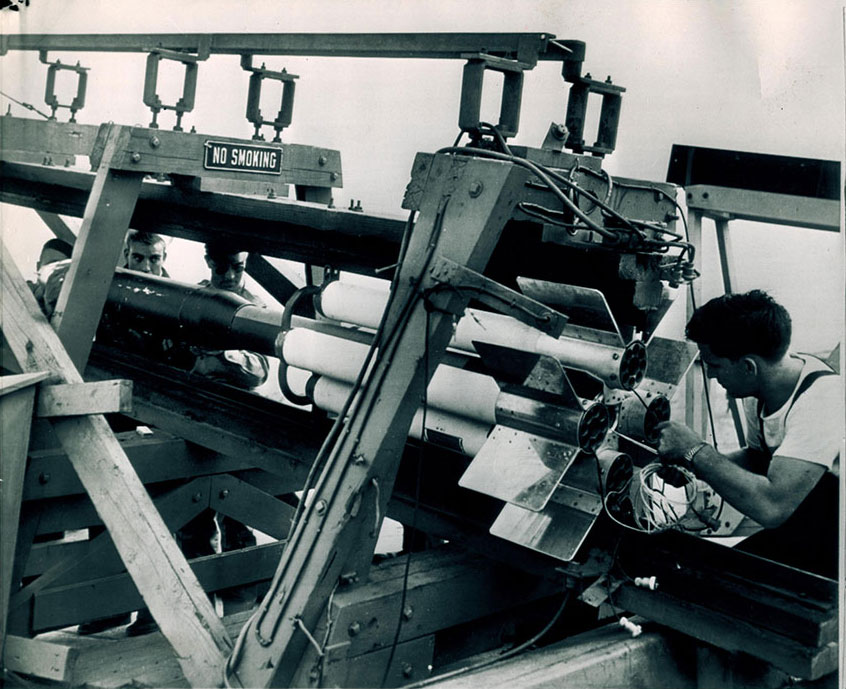
A Navy technician adjusts a rocket engine before a test launch in Fort Miles, Delaware, in October 1947. AP/Courtesy of the Boston Globe Library Collection at the Northeastern University Archives and Special Collections.
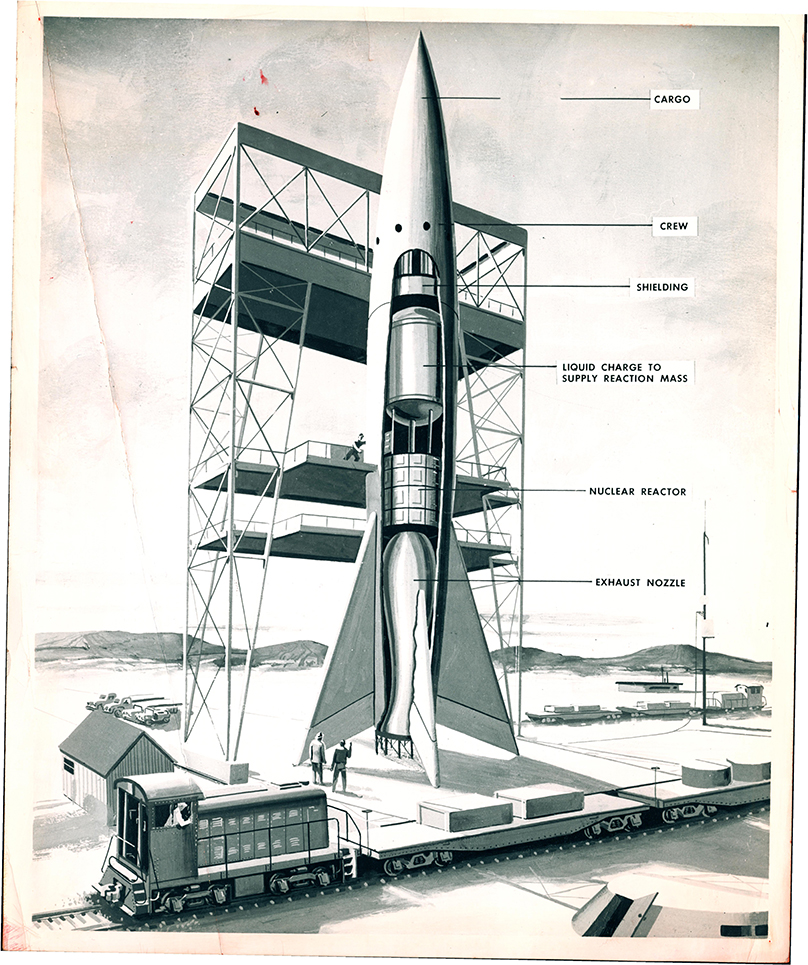
Early U.S. rocket design based on German V-2 specifications in 1955. Courtesy of the Boston Globe Library Collection at the Northeastern University Archives and Special Collections.
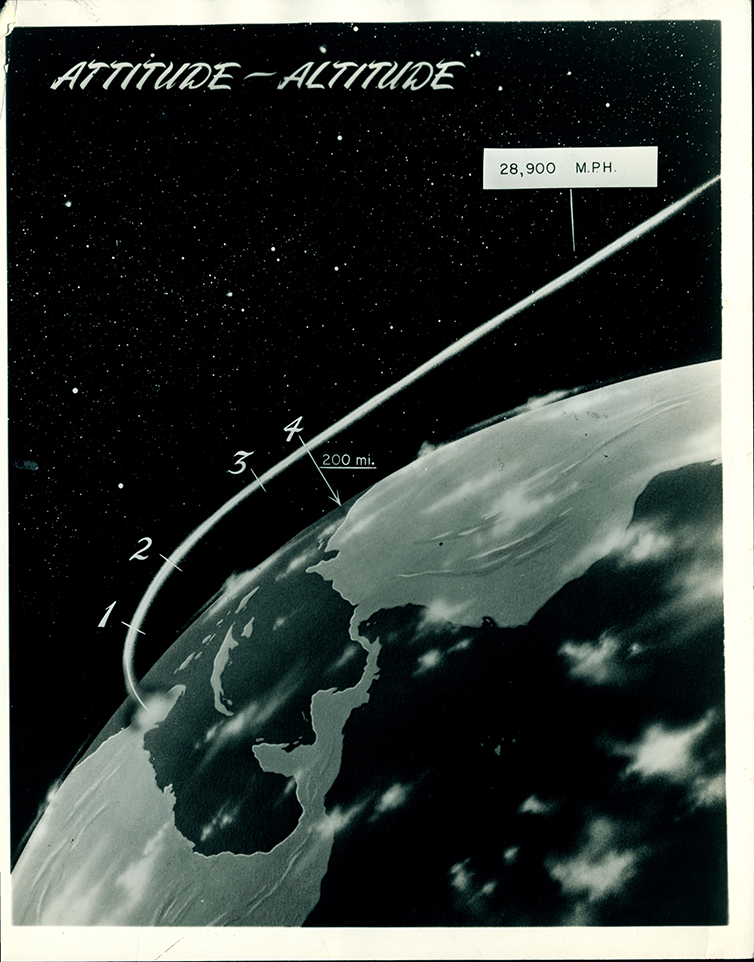
Trajectory of proposed moon launches. North American News Service (NANA)/Courtesy of the Boston Globe Library Collection at the Northeastern University Archives and Special Collections.
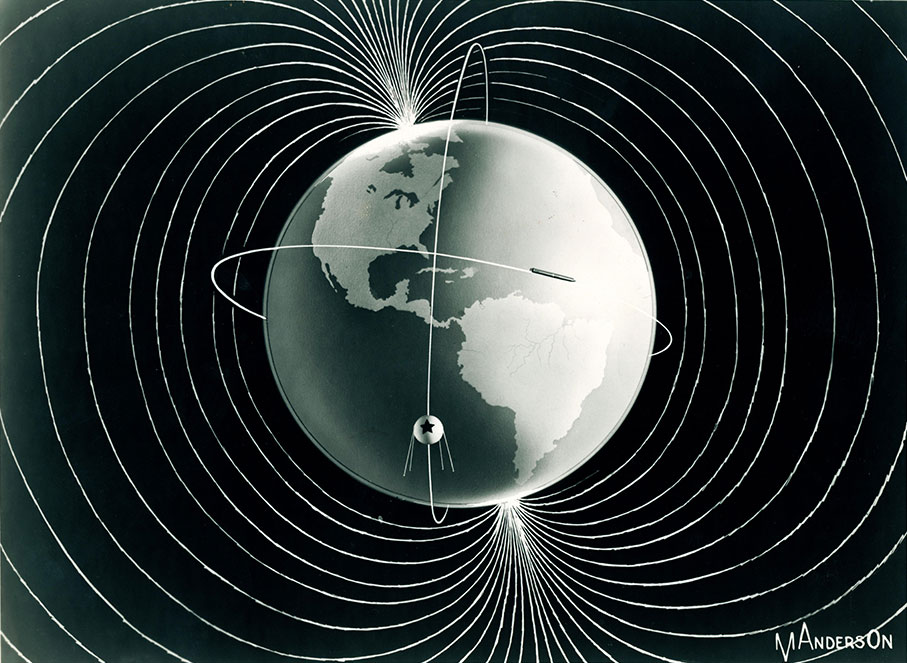
Polar (preferred by the Russians) vs. equatorial (preferred by the Americans) orbit. Courtesy of the Boston Globe Library Collection at the Northeastern University Archives and Special Collections.
On April 12, 1961, Soviet air force pilot Yuri Gargarin became the first person in space. His flight lasted 108 minutes, and he completed a single orbit of Earth in a capsule called Vostok I.
In 1960, the Soviet Union packed fruit flies, mice, rats, a rabbit, and two dogs into a space capsule. They were the first creatures to successfully orbit the earth and return alive. Manned flight was the obvious next step, and once again, the Soviets beat the Americans to the punch.

Contemporary illustration of Sputnik III in orbit. UPI/Courtesy of the Boston Globe Library Collection at the Northeastern University Archives and Special Collections.
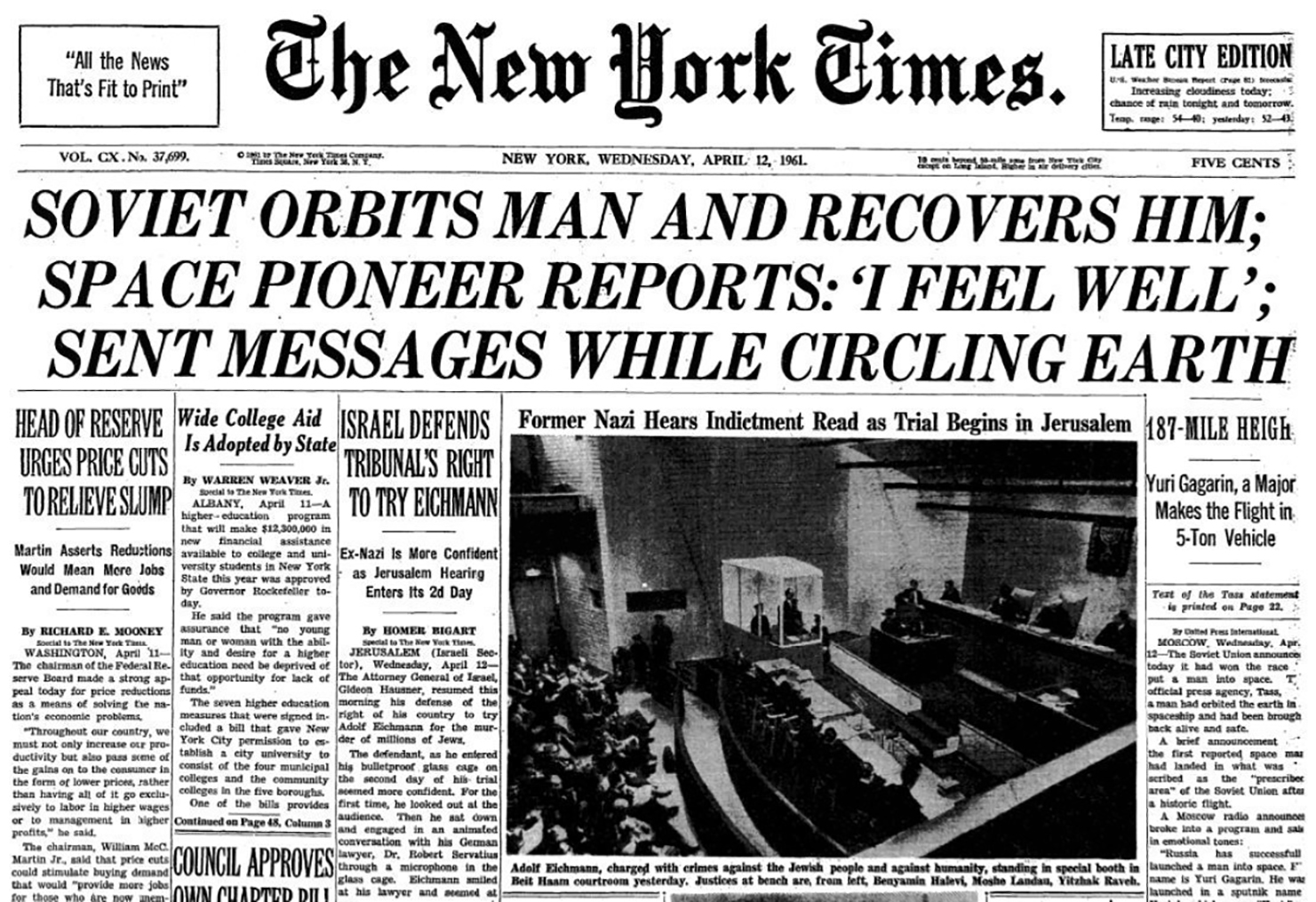
Image courtesy of The New York Times
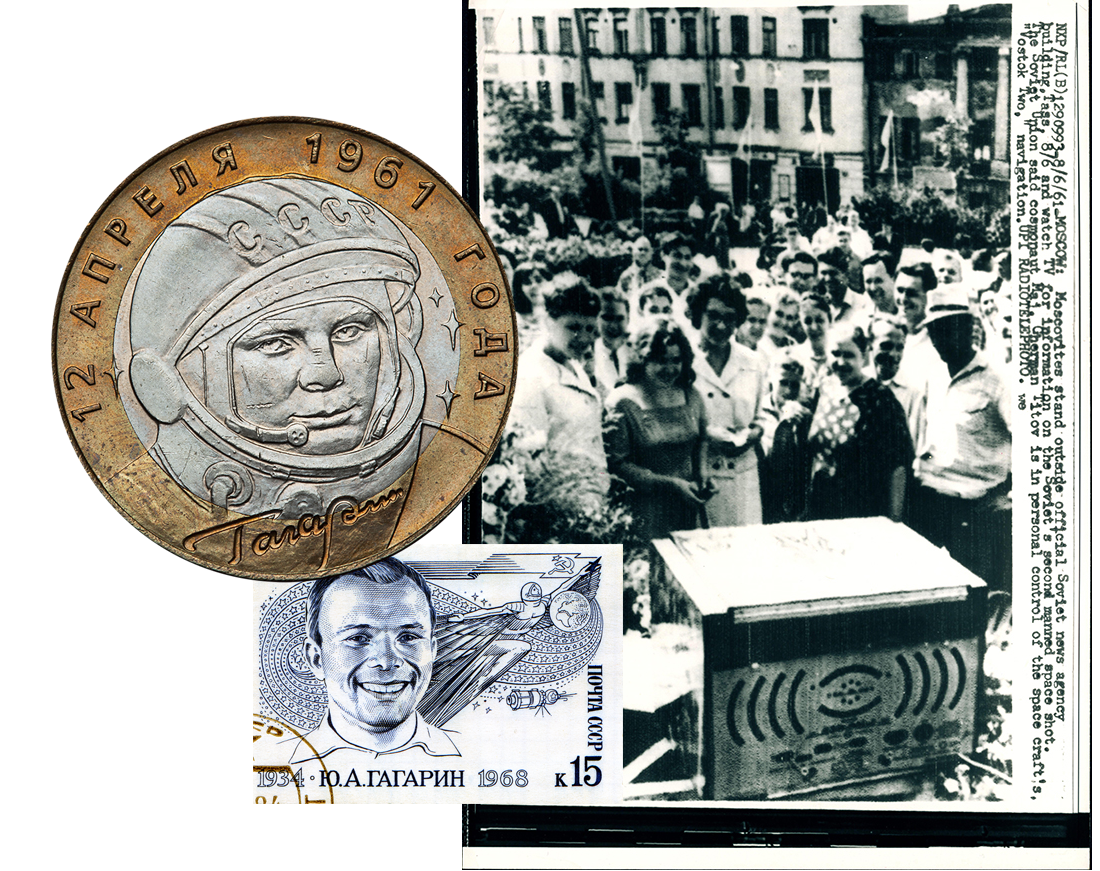
Crowds gather outside of the headquarters of Soviet news agency TASS to watch cosmonaut Gherman Titov in second manned space shot in Moscow, USSR on Aug. 6, 1961. UPI/Courtesy of the Boston Globe Library Collection at the Northeastern University Archives and Special Collections.
It was Sputnik all over again. Gargarin was hailed as an international hero. Crowds gathered in Moscow to celebrate his return.
If the Americans wanted to win the Space Race, they needed to move the goalposts. They needed to put a man on the moon.

- The space age takes flight
- Shooting for the moon
- After the moon
- Mars and beyond
- July 20, 1969
by Gregory Grinnell, Laura Castañón, and Hannah Moore






